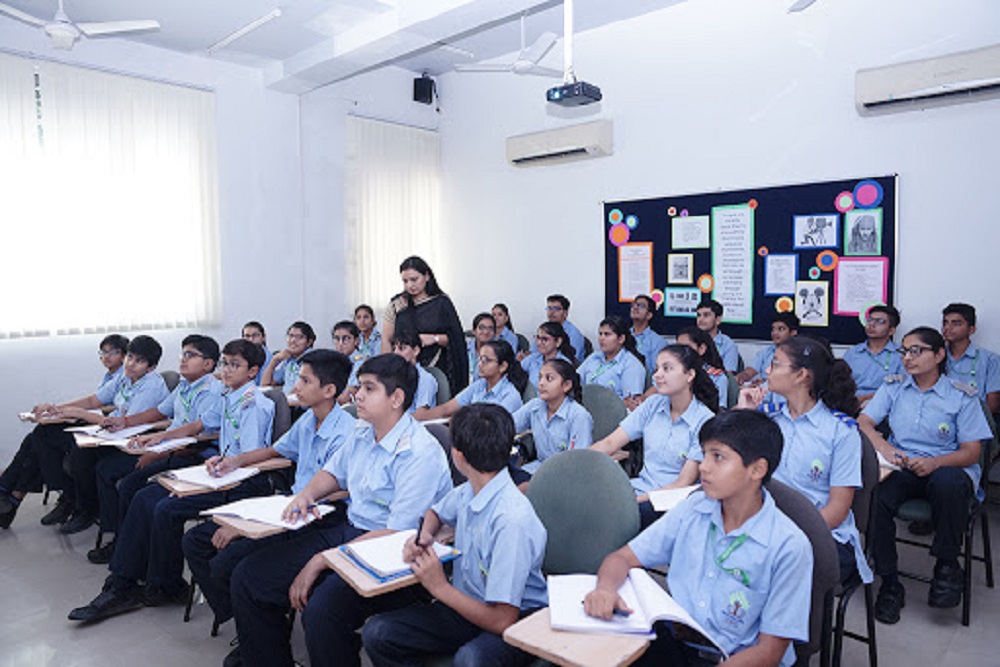The term motivational interaction, often used synonymously with motivational interviewing, was first used in the 1980s in the context of substance abuse treatment. The idea was to involve an authoritarian approach to break the patients’ dependence on substances by breaking down the habit of denial. As time progressed, medicine picked up motivational interaction and modified it to help patients with chronic diseases. Today, it is used extensively in the field to keep patients in their rehabilitation programs.
However, as the underlying motive is to change behavior and help people to get back to their normal lives, the concept found its way to our education system. Only the top CBSE schools in Sonipat now use motivational interaction (MI) to help struggling students. The strategy is certainly working to improve the educational performance and overall lifestyle of young children.
What is motivational interaction?
In the context of school students, motivational interaction does not look the same way as it started. It is not authoritarian and it is not aimed to fight any addiction. In the top schools, motivational interaction is more of an intervening strategy that is destined to help students over conversations. Expert psychologists engage students and run a series of conversational steps to improve the students’ attention span and focus on what matters and set the ground for future success. MI can be applied to both motivated and demotivated students. Depending on the need, MI comes in more like a facilitating phase of a student’s life rather than being a controlling or directing one.
Let us explain motivational interaction further with the help of an analogy. Imagine a person (student) navigation a deep forest (education). The destination is known. The goal is clear. To reach the end of the forest (finish education), the person will walk at his/her own pace (learning), seek help from a map (teacher), and stick to a fixed route (curriculum). But with everything set, there is no guarantee that person will not get lost in the forest. Here, an expert has to intervene if the person has taken a wrong turn somewhere. The expert will not stay with the lost person throughout the course of the journey but will act as a temporary guide to return the person back to the right track. The expert can come in and leave at various stages and help generally comes through conversations whenever needed. MI works in this fashion.
How MI helps students?
As obvious now, MI is implemented on students who are struggling with their education for some reason. Maybe it is a learning disability. Maybe a specific behavioural trait is interfering with the student’s education. No matter the reason, motivational interaction can intervene and redirect the student’s focus and attention to the right areas and prevent further damage to his/her education.
MI starts with engagement. In the best school in Sonipat, a trained counsellor engages with a struggling student to figure out the roots of the academic disruptions. Through conversations with the student and his/her parents, the counsellor looks to diagnose the issue and eliminate other aspects that also tend to cause disruptions.
Next comes focus. Once the cause is diagnosed, the counsellor now lays down focused plans to treat the problem. This is where the goal of the MI process of determined. The student and the parents are kept in the loop so that everyone does their bit to achieve the goal. The focus step requires collaboration from all vested individuals who want the student to improve.
Third on the list is evoking motivation. Here, the adults around the student motivate him/her to change the disruptive behaviour. Simple steps like encouraging words, acknowledging relapse, identifying mistakes and providing support go a long way to evoke motivation within the student to feel that he/she is capable of changing.
Lastly, MI concludes with planning – framing a schedule that the student needs to stick to reach bring out complete change. Again, the plan encompasses both the student and the adult around. To develop a change plan, the counsellor will take inputs from parents and teachers and make sure that everyone, including the student, is committed to change.
Through motivational interactions, students can have a way to completely overhaul their personality and become more productive and determined in life to achieve the right dreams. Swarnprastha Public School, one of the top 10 Boarding schools in Sonipat, has a dedicated counseling department that utilises the motivational interaction technique to help its students. Early intervention can modify behaviour or eliminate learning disabilities effectively and SPS tries to do just that with its expert counsellors. MI has already helped many SPS students and brought out their true potential by changing traits through engaging conversations.








